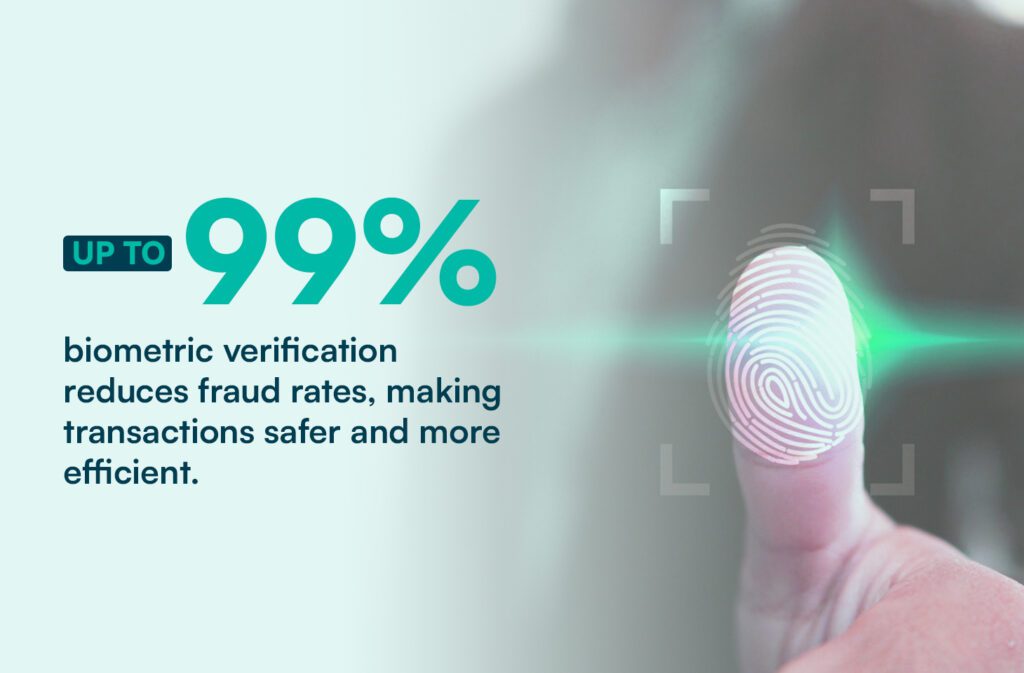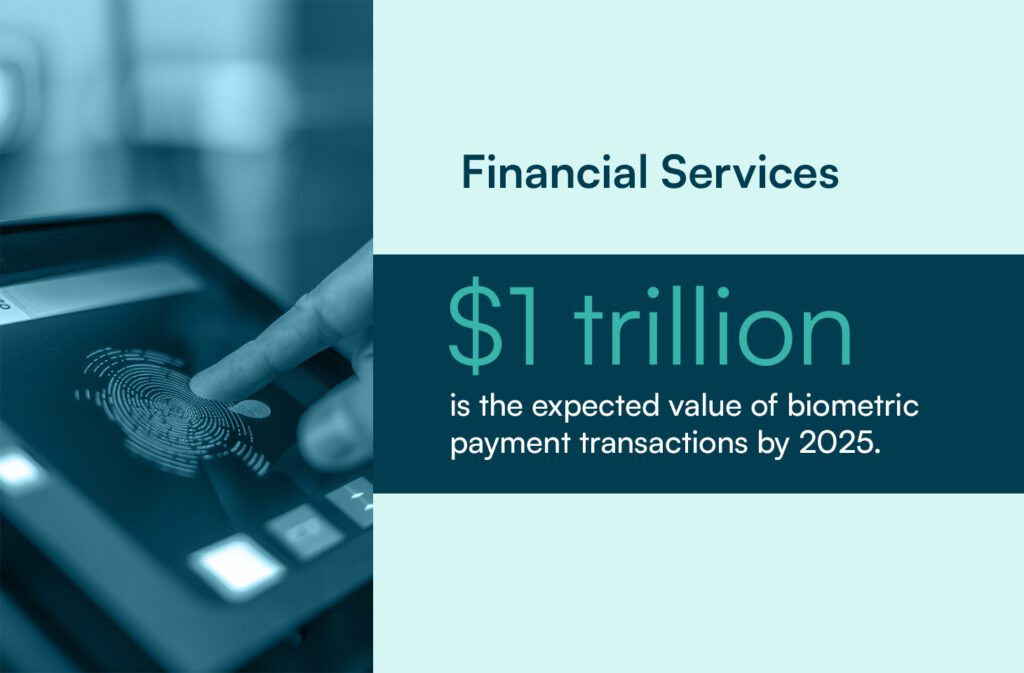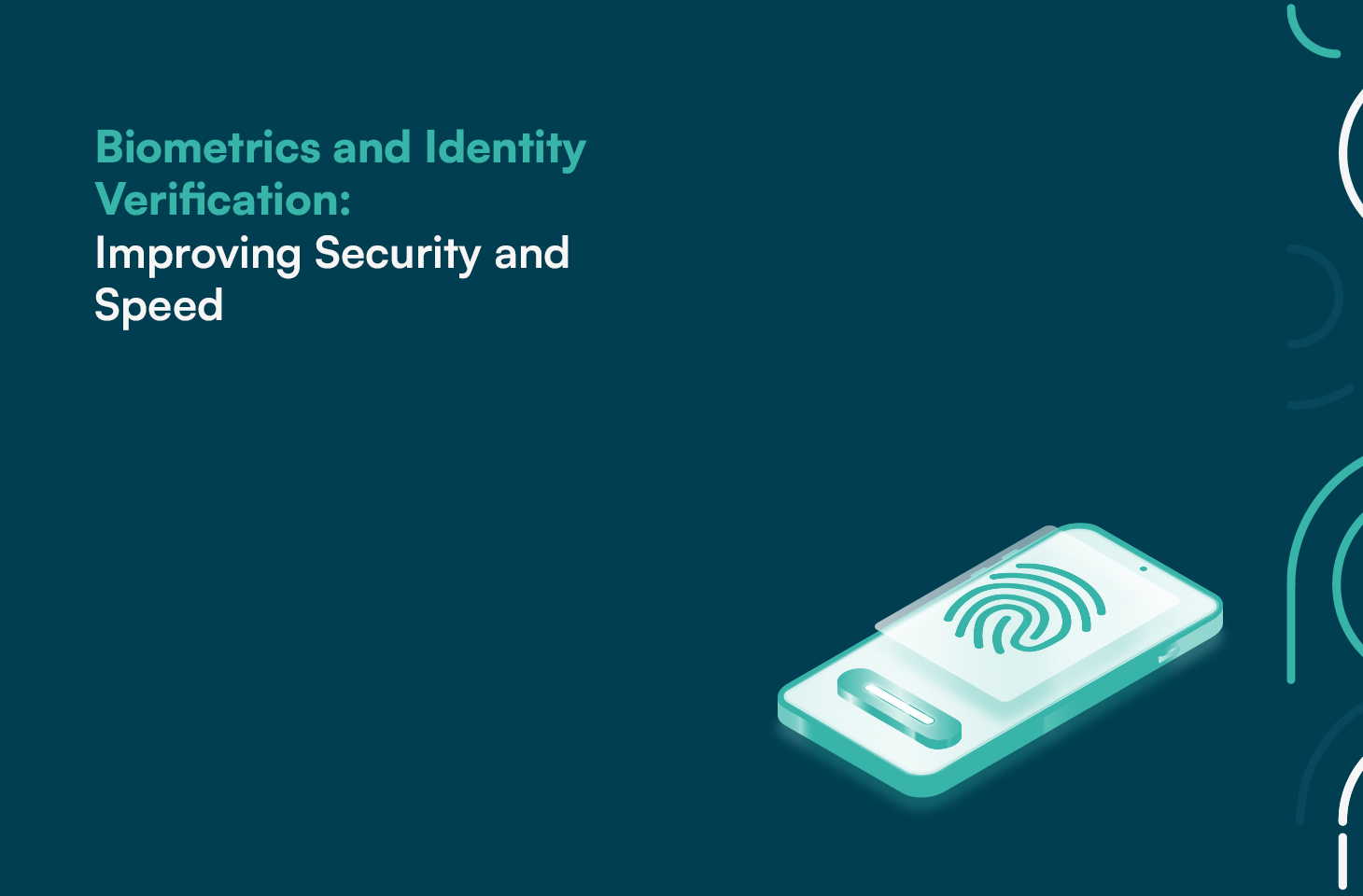Digital interactions are more common than ever, making strong identity verification essential. Cyber threats and data breaches continue to rise, pushing businesses toward biometrics for security and efficiency. Not only do biometric systems enhance security, but they also streamline identity verification processes, providing a seamless experience for users. In this article, we will explore how biometrics solutions are transforming identity verification and examine compelling statistics that underscore their effectiveness.
Understanding Biometrics
Biometrics refers to the measurement and statistical analysis of people’s unique physical and behavioral characteristics. In simple terms, biometrics uses unique physical or behavioral traits to verify identity. Common methods include:
- Fingerprint Recognition: One of the most widely used biometric methods, fingerprint recognition has a false acceptance rate (FAR) of 0.001%.
- Facial Recognition: This technology can identify individuals with a 99.7% accuracy rate under optimal conditions, making it a reliable choice for identity verification.
- Iris Recognition: With an FAR of just 0.00008%, iris recognition is one of the most secure biometric methods available.
- Voice Recognition: While slightly less accurate than other methods, voice recognition can achieve an accuracy rate of about 90% in controlled environments.

The Power of Biometrics in Security
Biometric systems offer unparalleled security advantages over traditional methods of identity verification, such as passwords and PINs. Here are some key statistics that highlight this benefit:
- Password Vulnerability: A study by the University of Maryland found that hackers attack an average of 30,000 websites daily, and weak or stolen passwords cause 81% of data breaches.
- User Preferences: A Mastercard survey revealed that 92% of consumers prefer biometrics over passwords for identity verification, citing ease of use and enhanced security as primary reasons.
By leveraging unique biological traits, biometric systems significantly reduce the likelihood of unauthorized access, providing an added layer of security that is difficult to replicate or forge.
Accelerating Identity Verification Processes
In addition to enhancing security, biometrics streamline the identity verification process. Traditional methods often involve lengthy procedures that can frustrate users. Biometrics, however, enable quick and efficient verification. Consider the following statistics:
- Speed of Verification: Biometric systems can verify identity in as little as 1-2 seconds, whereas traditional methods can take several minutes or longer.
- Reduced Fraud: A report from the International Biometric + Identity Association (IBIA) indicates that biometric verification reduces fraud rates by up to 99%, making transactions safer and more efficient.
The speed and accuracy of biometric verification processes not only improve user experience but also increase operational efficiency for businesses.

Applications of Biometrics in Various Sectors
Various sectors are adopting biometrics, reaping the benefits of improved security and faster identity verification. Here are a few notable applications:
- Financial Services: Juniper Research expects biometric payment transactions to exceed $1 trillion by 2025, driven by the demand for secure and fast payment methods.
- Healthcare: The healthcare sector is increasingly adopting biometric systems to verify patient identities. A study by the American Journal of Managed Care found that biometric identification can reduce patient misidentification errors by 90%.
- Travel and Immigration: Airports and border control agencies are implementing biometric systems to expedite the processing of passengers. The International Air Transport Association (IATA) predicts that biometrics could speed up airport processing times by up to 50%.
- Government Services: Biometric identification systems are used for issuing national IDs and passports. According to the World Bank, biometric registration can increase voter participation by up to 20%.
Overcoming Challenges in Biometrics
Despite the numerous advantages of biometrics, there are challenges to be addressed:
- Privacy Concerns: With growing concerns over data privacy, businesses must ensure they are compliant with regulations such as GDPR. A survey by the Ponemon Institute found that 65% of consumers are worried about how their biometric data is used and stored. However, with identity verification solution providers like Prembly, this is a long-forgotten challenge, as KYC solutions automate data privacy into their systems.
- Technological Limitations: Environmental factors can impact the effectiveness of biometric systems. For example, fingerprint scanners may struggle in wet or dirty conditions, while facial recognition systems can be less effective in low-light environments. With Prembly’s biometric dynamism, we are transforming facial recognition by integrating multiple simple prompts to ensure accuracy and verify a user’s identity.
The Future of Biometrics
The future of biometrics looks promising. Innovations in technology continue to enhance the accuracy and reliability of biometric systems. Emerging trends include:
- Multi-Factor Biometrics: Combining multiple biometric identifiers (e.g., fingerprint and facial recognition) can further enhance security.
- Mobile Biometrics: The rise of smartphones equipped with biometric sensors is making it easier for consumers to authenticate themselves securely and conveniently.
- AI Integration: Artificial intelligence is being integrated into biometric systems to improve accuracy and speed, enabling real-time identity verification.
Conclusion: Embracing Prembly’s Biometrics for a Secure Future
As cyber threats become more sophisticated, the importance of secure identity verification cannot be overstated. Biometrics represent a powerful tool for enhancing security and streamlining processes, making them an essential component of modern identity verification systems.
By adopting biometric technologies, businesses can not only protect themselves from the rising tide of fraud but also provide customers with a seamless and efficient experience. With statistics indicating a significant reduction in fraud and an increase in user satisfaction, the case for biometrics is compelling.
As you plan the future of identity verification in your organization, consider Prembly’s dynamic biometric solutions. By incorporating adaptable and randomized elements, Prembly makes it significantly harder for fraudsters to predict, replicate, or bypass the verification process—eliminating the persistent errors common with other biometric platforms. This advanced approach ensures a more secure and reliable authentication system, crucial for safeguarding sensitive information and combating sophisticated fraud attempts.







